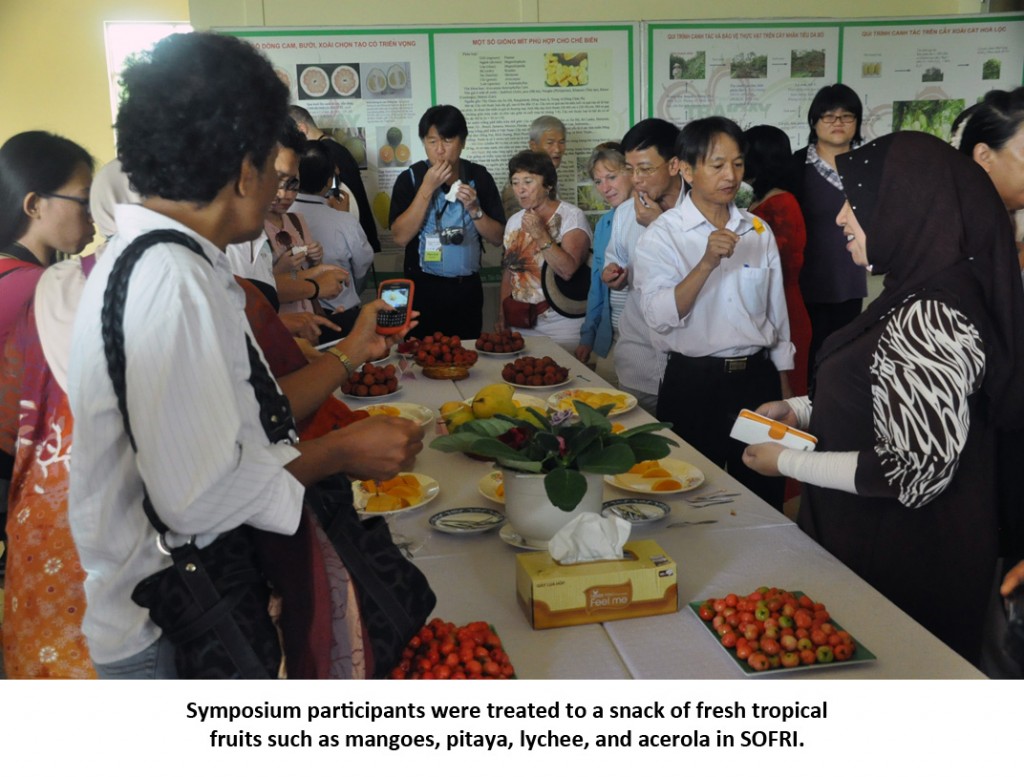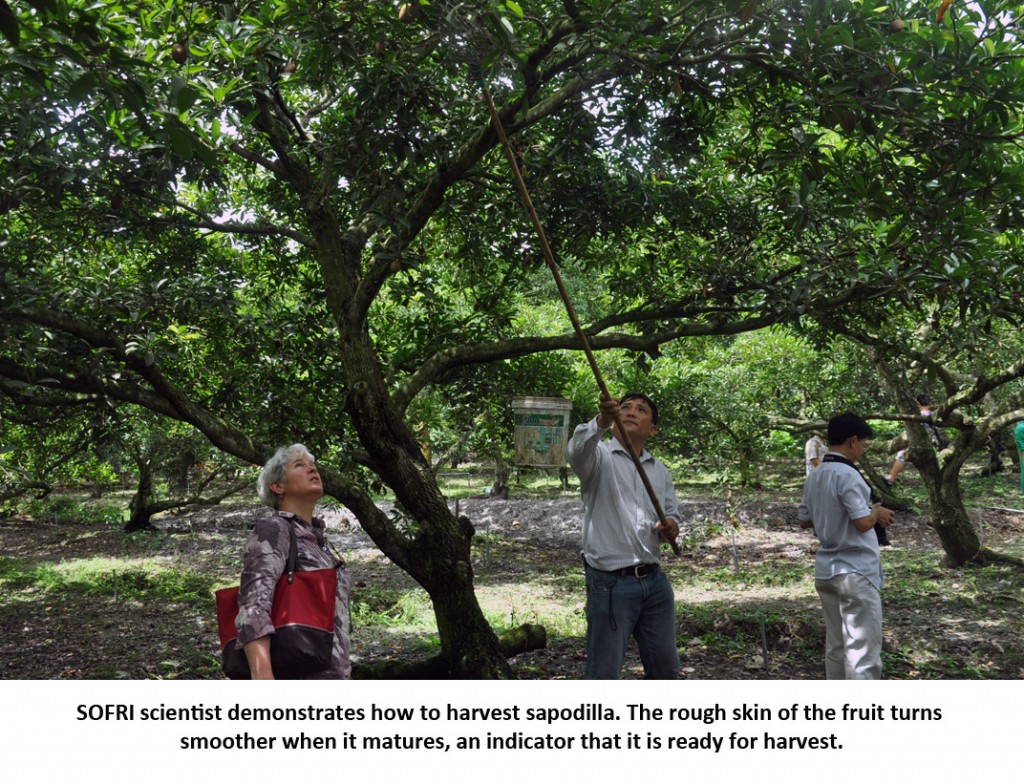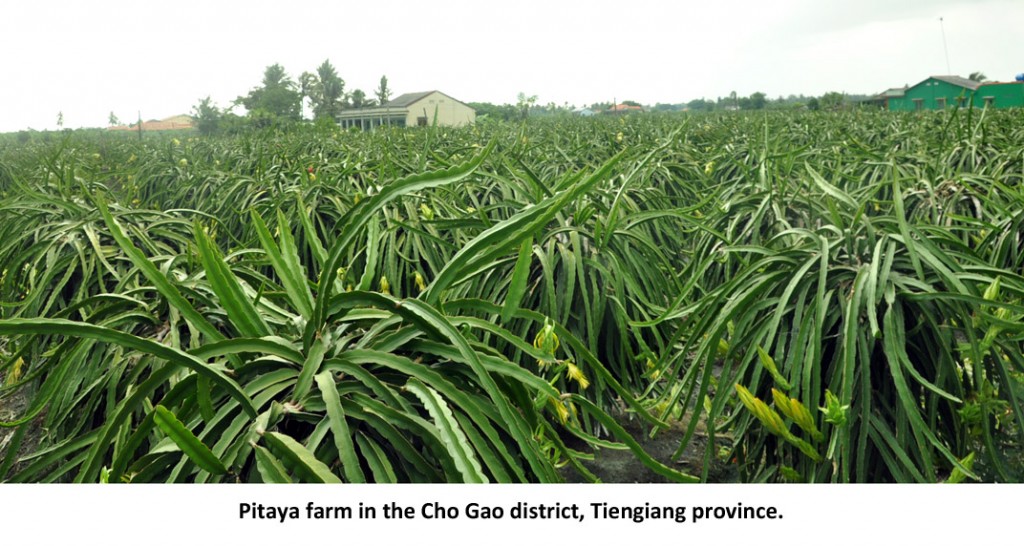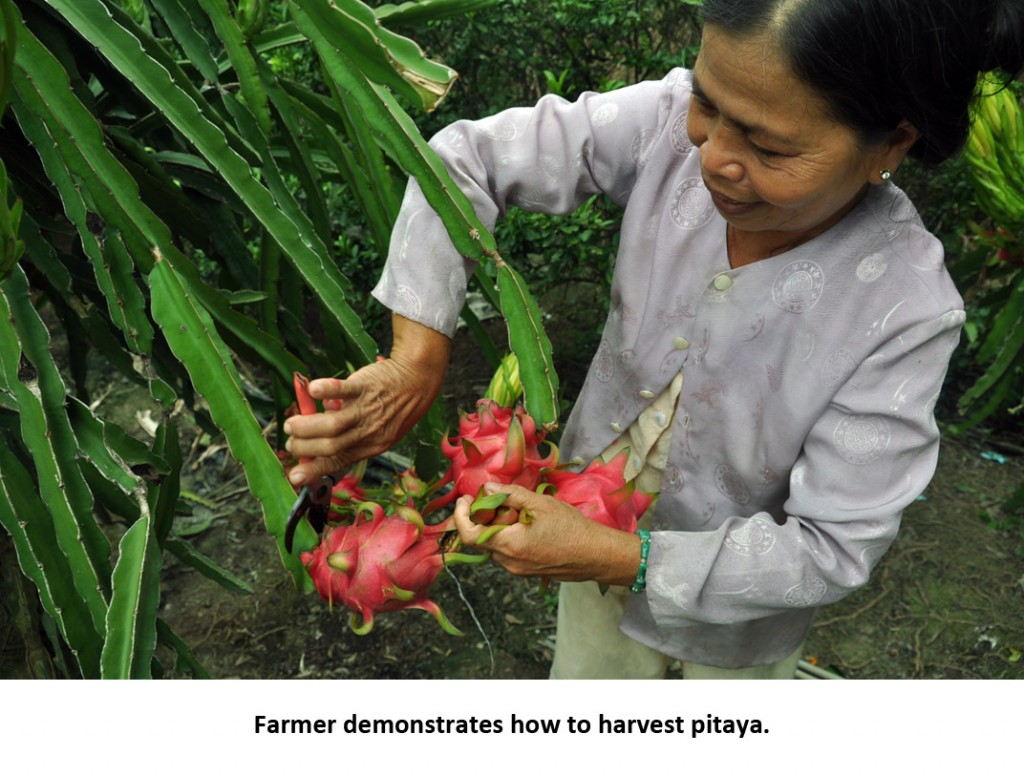Participants of the International Symposium on Superfruits: Myth or Truth went on a field trip to the Mekong Delta on 3 July 2013, a day after the Symposium.
In the morning, the participants visited the Southern Horticultural Research Institute (SOFRI) at Tiengiang, Vietnam. Institute Director Dr. Nguyen Minh Chau presented an overview of the Institute to the participants.
SOFRI is located near the fertile Mekong Delta, an area well known for its high productivity in rice and horticultural crops. Its location is conducive for research and development programs on fruit, vegetables, and flowers for domestic consumption and export, including selection and breeding, agronomy, plant protection, postharvest, and marketing. SOFRI also designs and develops model farms for intensive small-scale and large-scale farming. Aside from basic research, the institute also carries out extension activities such as transfer of technology to farmers, including VietGAP and GlobalGAP training and certification. The main fruits in focus are pomelo, mandarins, pitaya, mango, and guava.
The next stop for the field trip is a sapodilla (Manilkara zapota L.) farm in the Chau Thanh District, Tieng Giang province. The farm is situated in a district with about 3000 farmers growing sapodilla in an area of 850 ha.
Sapodilla trees have a wide shade and are maintained to grow at 3-4 m tall. The trees grown are mostly 10-20 years old but some can reach the optimum productivity as early as 7 years.
The Mac Bae cultivar is grown in the area because of its high-quality. The fruit weighs 300-400 grams, and can reach the size of a medium potato.
The average yield is about 20 tons/ha the whole year round but during the peak season of December to June, yields can reach up to 40 tons/ha. Farmers sell sapodilla at 15,000 VND (USD 0.70) per kg.
Participants also visited a pitaya (Hylocereus undatus) farm in the Cho Gao district, Tiengiang province. Pitaya production in Vietnam is a booming industry, grown in 22,000 ha nationwide with an annual yield of 400,000 tons in 2011. Both white flesh and red flesh varieties are grown in Vietnam.
The production area of pitaya in the Tiengiang province has grown to 2000 ha, with an annual production in Cho Gao of 40,000-50,000 tons. The farm gate price for pitaya is 10,000 VND (0.50 USD) per kilo during peak season but reaches up to 15,000 VND (0.70 USD) during the off-season.
High demand markets on good quality and food safety is encouraging smallholders to follow standards. More than 5,000 ha of pitaya farms in 2011 are VietGAP certified, including the farm that participants visited.




